Category: Welding
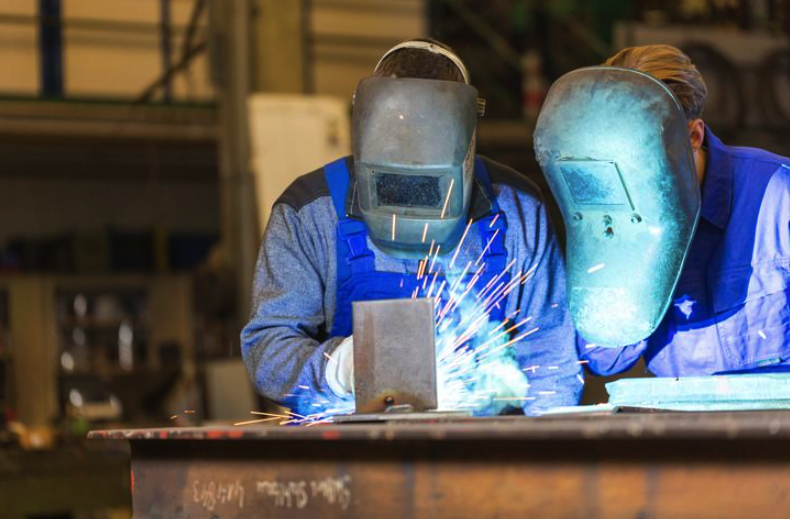
Looking for a rewarding career that can teach you many new skills and allow you to work with your hands to build and fix things every day? Welding might just be the right choice for you. Should you decide to pursue a career in this field, going to welding school can help set you up for a future in this profession. A great welding training program can teach you about the trade through both a theoretical and practical lens.
Those who pursue welding as a career path can open themselves up to a hugely gratifying profession. Here are some reasons why you should consider welding school to fulfill your career ambitions.
Welding Is a Fantastic Career, Especially if You Have the Personality For It
Are you a patient, creative, hard-working individual who relishes the challenge of working in an intense environment? Welding is a career that caters to exactly these kinds of people. Welders are typically subjected to a large amount of smoke and heat, all while wearing heavy protective gear like coveralls and a mask. This type of work requires a great amount of endurance, as well as the knowledge and instincts to be able to join metal pieces together with the utmost care and accuracy. As a trained welder, you might have opportunities to work in several different industries after completing an apprenticeship, such as: manufacturing, oil, construction, architecture, and more. If any of these job prospects interest you, welding could be a great fit for your professional career.
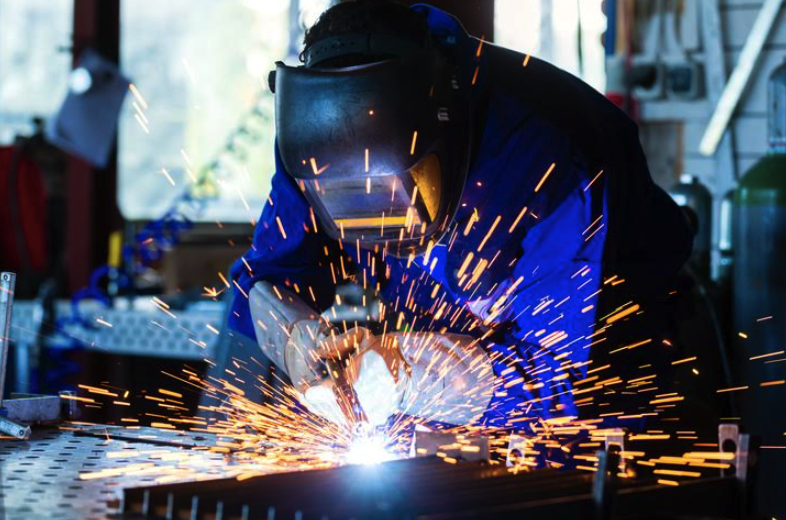
Taking a Welding Diploma Program Can Teach You Many Lessons About the Trade
If you’re looking for a way to gain the foundational knowledge necessary for success in the welding industry, starting your welding training is your ticket. At NATS, our welding program offers students the opportunity to learn about the trade over 55 weeks. During the program, you can learn about concepts such as welding processes, equipment, safety standards, blueprint reading, and positional welding. Furthermore, students at NATS can use our on-campus labs for hands-on learning. Here, processes like MIG (Gas Metal Arc Welding) and TIG (Gas Tungsten Arc Welding) welding are learned through the use of modern equipment. This helps give students practical, real-world experience before even setting out to work in the field.

You Won’t Need Prior Experience to Get Started in Welding Training
At NATS, some students come to the welding program having already gained a bit of welding practice beforehand. “I chose to study welding, because I did it in high school,” says Emily Harrison, a graduate of NATS’ welding program. “I’m a bit of an artist, and I wanted a little bit more knowledge and a little bit more practicality for the future.”
However, those hoping to attend welding school should also note that they don’t need any prior experience to get into the program. Even without any base knowledge of the trade, taking a welding program can provide you with the training to open you up to various career opportunities, often starting out as an apprentice welder to further sharpen your skills in such roles as ironworker, boilermaker, pipefitter, and more. Not only do you not need experience or a university degree to enter the field, but you also have a wide range of career choices available to you—making welding a great choice for fulfilling your professional aspirations!
Do you want to begin your welder technician training?
Contact North American Trade Schools today to learn more!
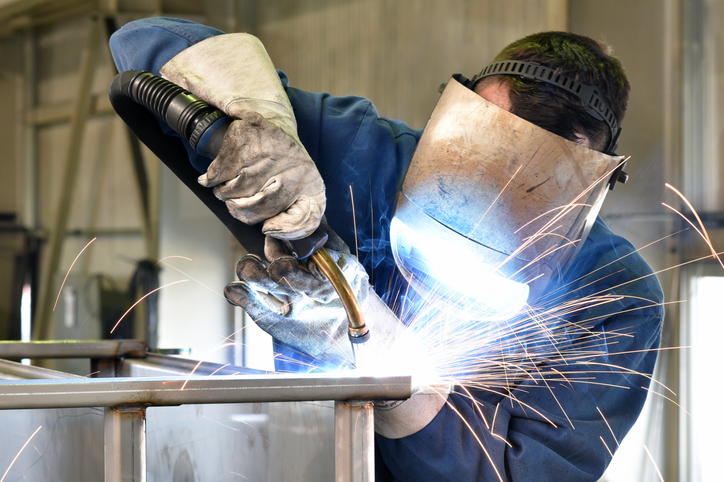 If you’re someone who enjoys the satisfaction of building something with your own two hands, then a career as a welder might be for you. With their skill set, welders are equipped to build and repair a variety of things, from metal furniture to huge vessels such as ships. With so many things depending on the work of welders, it’s no wonder that welding is a respected and highly skilled profession.
If you’re someone who enjoys the satisfaction of building something with your own two hands, then a career as a welder might be for you. With their skill set, welders are equipped to build and repair a variety of things, from metal furniture to huge vessels such as ships. With so many things depending on the work of welders, it’s no wonder that welding is a respected and highly skilled profession.
So what does it take to join it? The first step is completing a pre-apprenticeship program before starting your apprenticeship. Here’s a look at what you can search for when making your decision.
Your Welder School Should Offer Hands-On Welder Training
Perhaps the most important thing in choosing a welding school should be whether the program offers hands-on experience. At the North American Trade School (NATS), students benefit from both a hands-on and theoretical approach to welding to ensure that graduates are ready to step into the field with confidence.
Students can gain experience in welding while using modern equipment, building skills in many different welding processes such as Flux Cored Arc Welding, Shielded Metal Arc Welding, Gas Metal Arc Welding, and Gas Tungsten Arc Welding. For welding graduates like Emily Harrison, NATS was a great choice because of “how much practical work [she] was able to do.” Because welding processes can often be complex, it’s important to complete your welding training in a hands-on setting such as the one NATS offers.
All Welders Need Expert Teaching
Welding is a complicated job, requiring familiarity with a variety of safety measures, equipment, and procedures. In order to become a qualified welding professional, it’s important to choose a welding program that will not only equip you with the right certification, but will teach you the techniques and skills necessary to succeed. When choosing a welding program, look for one that prioritizes access to knowledgeable instructors every step of the way. At the North American Trade School, instructors are experts in their fields, and they’ll be able to equip you with the training you need to excel in a wide variety of welding techniques, while following the correct safety procedures. The welder school you choose should offer courses taught by expert instructors in order to prepare you for your career.
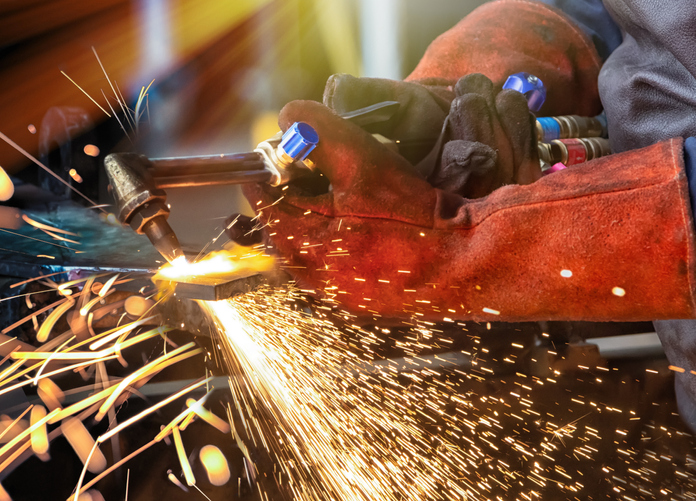
During Your Welding Training, Your Instructors Should Be Available to Guide You
Another key component to your welding education should be access to plenty of support from your top-notch instructors. In addition to being experts in their field, your instructors should be there to guide you through welding best practices, processes, and safety protocols, and answer any questions you may have.
Welding graduate Adam Maize says that what he enjoyed most about NATS was “probably the instructors… They were very open to conversation and explaining what to do here.” In a hands-on training environment, instructors who are there to make sure that you’re understanding every step of the process are essential to a solid education in welding.
Are you ready to begin your welding career?
Check out the North American Trade School’s welding program to get started.
 In the welding world, gas tungsten arc welding (GTAW)—also frequently referred to as tungsten inert gas (TIG) welding—produces welds via a process using tungsten electrodes. A shielding gas protects the weld pool area from air pollution, and inert gases such as argon, helium, or a mixture of the two are used.
In the welding world, gas tungsten arc welding (GTAW)—also frequently referred to as tungsten inert gas (TIG) welding—produces welds via a process using tungsten electrodes. A shielding gas protects the weld pool area from air pollution, and inert gases such as argon, helium, or a mixture of the two are used.
Due to the high level of precision in this form of the trade, GTAW is typically reserved for high-quality jobs requiring more attention to detail. It’s also the form most appreciated by experienced welding practitioners, due to its ability to turn out stronger welds with cleaner, more artful results and higher integrity.
To understand more about GTAW welding, let’s take a look at five interesting facts about this method.
1. It Takes Longer to Master Than Other Welding Types
The finicky welding method of GTAW requires a lot of practice to perfect. In fact, it’s usually only attempted once a welder has a solid grasp in some of the more basic forms of the trade, such as metal inert gas (MIG) welding.
The more complex GTAW procedure requires a non-consumable tungsten electrode to run a current through the metals the technician is looking to weld together. After the metals have been liquified by the heat of the electrode, the filler material is hand-fed into the weld pool. Those interested in a welding career should know that this method is slower to perform than more basic “point and shoot” one-handed weld methods, and is a lot more difficult for inexperienced users to accomplish.
2. It Requires a Lot of Focus
Any type of welding is reliant on lots of concentration to avoid mistakes and accidents. If you’re attending welding school, you’ll be interested to hear that GTAW welding requires an even sharper level of focus. Both hands are needed to work on a GTAW job, with the welding torch in one hand and the filler material in the other.

A lot of concentration and a steady hand are needed to feed the wire as the operator attempts to move smoothly through the weld. The clean results at the end of this painstaking process come from a lot of patience, along with razor-sharp focus to prevent mishaps and unsightly errors.
3. Its Ability to Apply Controlled Heat Allows for Cleaner Results
On GTAW welds, a foot pedal controls the electricity coming to the torch, allowing for a level of deep penetration and accuracy that prevents the arc weld splatter one might get with a more basic type of welding. This control of the heat allows for much cleaner results—perfect for more advanced, high-precision jobs.
The welder doesn’t even necessarily need filler material here to get a successful join. This is important to remember, as welding requiring any filler material is usually a messier procedure. The precise metal-to-metal welds that GTAW welding enables allows for the operator’s desired smooth, clean surface. Producing an aesthetically-pleasing pattern and uniform bead, these welds often need no more than a light polish to finish.
4. It’s Ideal for Working on Stainless Steels
GTAW is well-suited to working on thin sections of light metals, including magnesium and aluminum. The method is particularly favourable for use on stainless steel welds. This is partly due to the aesthetics of these jobs, where the uncoated fabrication of the material means the weld remains exposed for the world to see. Additionally, stainless steels are a more expensive metal type, requiring significantly tidier finishes.
5. It’s More Expensive for Welding Career Pros to Complete
Due to the level of precision and attention to detail required, a GTAW weld is one of the most time-consuming jobs to complete. The process also has a low deposition rate to consider, with this rate measured in pounds per hour, deposited at a particular welding current. Additionally, a lot of GTAW welding equipment is at least twice as expensive as more basic tools of the trade.
Factoring in the time required from the highly-skilled welder multiplied by the hourly rate, plus the cost of resources needed on higher-quality jobs, these welds are much more costly to complete than other forms of the trade.

Interested in pursuing a thriving career by earning your professional welding diploma?
Contact North American Trade Schools today for more information on its exciting welding diploma program!
 Both MIG and TIG welding are procedures that use electrical arcs to create enough heat for melting down metals into liquids. Both methods use filler material to join metal pieces together, and inert gas is also used to prevent welding electrode corrosion for both procedures. Despite these similarities, these welding types remain quite different in their approach, and with different purposes for their use.
Both MIG and TIG welding are procedures that use electrical arcs to create enough heat for melting down metals into liquids. Both methods use filler material to join metal pieces together, and inert gas is also used to prevent welding electrode corrosion for both procedures. Despite these similarities, these welding types remain quite different in their approach, and with different purposes for their use.
Generally speaking, MIG welding is a good low-cost bet for completing jobs on steel and aluminum quickly, whereas TIG welding is typically reserved for more expensive, high-quality, and precise jobs–requiring more training to master and taking a lot longer to complete.
For a better understanding of which welding type to use and when, let’s take a closer look at both of these processes!
What Is MIG Welding?
This type of welding is often called ‘point and shoot’ welding due to its similarities to aiming and pulling the trigger on a gun. Metal inert gas (MIG) welding works by feeding metal wire continuously from a spool connected to an electrode into the weld–with wire being used to join the two metal objects together as a filler material.
An electric current flows through the filler wire to produce an arc. While it’s touching the metal being welded, the arc is generated. With this short-circuit welding process, you move the gun at a steady speed along the joint upon starting the arc until the job is done.
Pros with welding technician training may know that MIG welding is effective on many thicker types of sheet metal. It’s also a lot easier to pick up as a trade, and a faster process than the more precise art of TIG welding.

What Is TIG Welding?
If you’re interested in attending welding school, you’ll eventually hear about the more finicky art of tungsten inert gas (TIG) welding. Here, the metals you’re looking to weld together need to have a tungsten electrode running a current through them. Once the metals have been liquefied by the heat of the electrode, you join the pieces together by putting filler material into the weld puddle.
Unlike the one-handed use of a MIG welder, TIG welding requires both of your hands for the filler and the torch, since they are separate here. You control the electricity coming to your torch via a foot pedal, which allows for a level of deep penetration and accuracy that prevents the arc weld splatter that can result from a more basic MIG job.
In order to feed the wire, you must have a steady hand and stay extremely focused while moving through the weld. The level of control made possible by this procedure allows for a much cleaner weld—perfect for high precision, more advanced jobs. With TIG welding, you don’t even necessarily need filler material to get a successful join.
How to Decide Which One to Use After Welding Technician Training
With any weld job, looking at some key components of the work at hand will help you decide whether to use the MIG or TIG approach. Cost is your first consideration, with TIG jobs typically being much more time consuming, and therefore more expensive to complete. To execute fast and low-cost jobs, MIG is best.
The thickness of the metals you wish to weld is next on the list, with MIG welds generally being much more effective on thicker, bigger pieces of sheet metal than TIG. Finally, you should consider the aesthetics of the job. Welding requiring any filler material is usually a messier procedure. The precise metal-to-metal welds that TIG welding can enable is splatter-free, allowing for the smooth, neater surface you’re looking for.

When talking about MIG and TIG welding, it’s really not possible to say that one type of welding is definitively better than another. Both procedures are necessary in the world of liquefying and joining metals, and both take a good deal of training to master—with MIG being the more basic starter skill that can later lead to performing the more precise art of TIG welding.
Are you interested in pursuing a thriving career by taking professional welding classes?
Contact North American Trade Schools today for more information on its exciting welding diploma program!
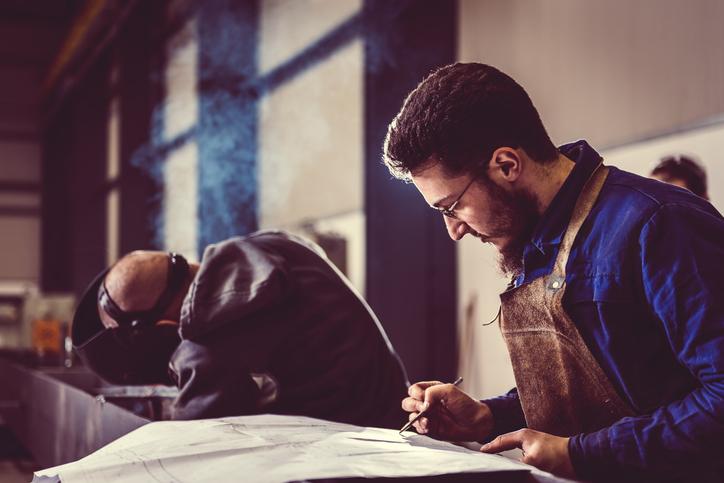
When you first look at welding symbols, you may be overwhelmed by the seemingly arbitrary shapes and numbers. However, despite what you initially think, these symbols do have deeper meaning—and knowing this meaning will work wonders for your future welding career.
These symbols are often found on welding project blueprints, and are used to communicate between the designer and the welder. Without understanding these symbols, you won’t know what specifications a weld requires.
If you’re interested in becoming fluent in the language of welding symbols, read on!
Welding Symbols 101 for Those in Welding Training
Welding figures generally consist of five main figures: arrow, leader line, reference line, tail, and weld symbol (not to be confused with the welding symbol, which represents the entire diagram). Confused yet? Let’s explain them figure by figure.
The arrow, for starters, points to the part of the diagram where the weld is needed. Attached to the arrow is the leader line, which intersects with the reference line. In the middle of the horizontal reference line is the weld symbol: this represents the type of weld required. Finally, at the opposite end of the reference line, you may find the tail—it is only required for special instructions—which forks off in opposite directions.
How to Interpret Welding Symbols
As you’ll learn in welding training, the location of the weld symbol vis-à-vis the reference line determines which area of the joint you should perform the weld.
If the weld symbol is under the reference line, you should make the weld on the same side as the arrow. However, if the weld symbol is located above the reference line, you should make the weld on the opposite side of the arrow. But if the symbol is on both sides of the reference line, then, as you can imagine, you must perform the weld on both sides.
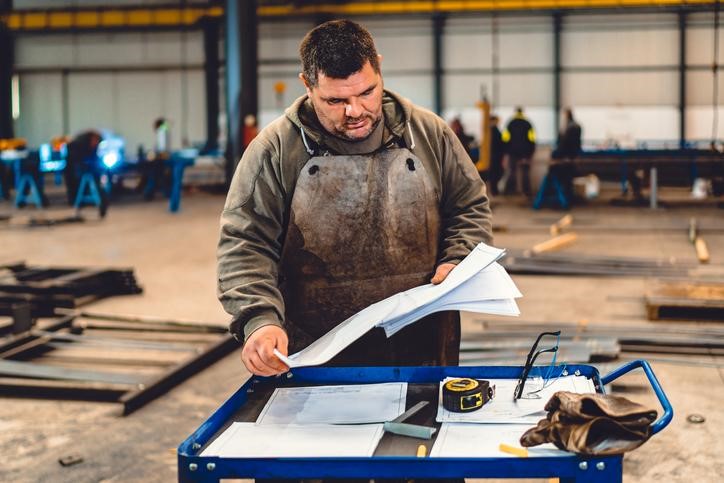
Understanding Dimensions and Angles in Welding Symbols
In addition to shapes and lines, welding symbols can also include numbers that communicate the depth, diameter, and length of a weld–along with the beveling angle, if applicable.
In many cases, you will find the weld diameter (or width) on the left-hand side of the weld symbol. The length of the weld is found on the right. If the length is not indicated on the welding symbol, you should conduct the weld from the beginning of the joint to the end.
The reference line also plays a part in understanding the dimensions of a weld, just as it did for the weld type. Any dimensions indicated below the reference line pertain to the joint on the side of the arrow. Dimensions above the reference line pertain to the joint on the opposite side. If dimensions are indicated on both sides of the reference line, then you should weld both sides of the joint.
If these numbers, figures, and placements seem complicated, fret not—welder technician training is there to help you decipher these symbols with ease.
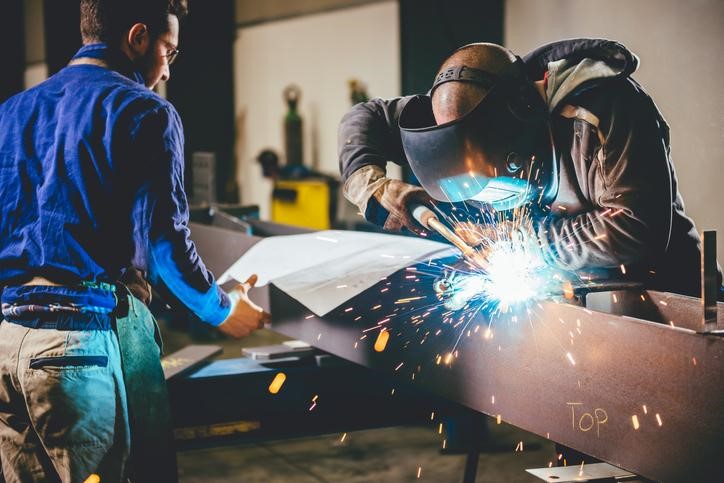
Do you want to get your welding diploma?
Contact North American Trade Schools to get started!
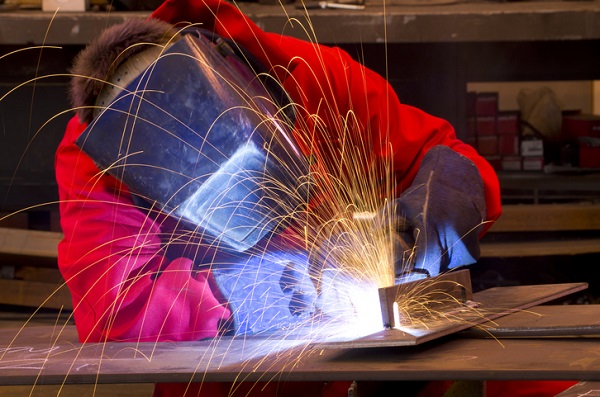
A professional welder is able to master multiple welding techniques specific to different metals and industries. Flux cored arc welding (FCAW) is a variant of arc welding and is often used to join heavy steel plates together.
FCAW differs from other welding processes as it can be done outside with minimal equipment and produces impressive results. It is one of the fastest manual welding processes and can produce more than 25 lbs of welded metal per hour. By comparison, gas metal arc welding (MIG) generates substantially less.
Read on to learn more about FCAW before practicing it for real in the workshop!
Learn How Flux Cored Arc Welding Works at Welder School
Similar to MIG, FCAW involves joining two pieces of metal together using heat. An electrode is continuously fed through a welding gun onto the joint. The electricity short circuits to generate heat, or an ‘electrical arc’, that causes the electrode to melt. This forms a molten puddle that joins the metal together when it cools.
Flux cored differs from other welding processes as the electrode contains a flux compound and shielding gas, which is released when heated. Shielding gas is normally made up of carbon dioxide or argon carbon dioxide, which protects the weld pool from contamination by oxygen or water vapour. This is normally added externally, however, in FCAW it is released automatically in a process called ‘self shielding’. Taking welding classes will teach you even more about these different aspects.
The Difference Between Self Shielding and Dual Shielding
There are multiple versions of FCAW, including self shielding and dual shielding. In self shielding, no external protective gas needs to be applied, as the gas released from the electrode is enough. This means that welding can be performed outside without concerns about windy weather contaminating the heated pool.
By contrast, dual shield welding uses an external shielding gas as well as the inner shield for extra protection. At welding school, students will gain practical hands-on experience performing these processes in the workshop.
The Advantages of Flux Cored Arc Welding
FCAW is a highly productive arc welding method and can weld large volumes of metal in a short time period. The electrode is continuously fed through, meaning that the operator does not need to stop and start to introduce a new electrode. Because of this, it is a common technique for welders working in the construction and maritime industries and who usually work with large, heavy metals.

FCAW is one of the only welding processes that can be completed outside. It is less easily contaminated by dirt or rust because of the flux compound, and requires minimal equipment. You do not need a heavy gas bottle, meaning that welders can move around and work outside of a workshop if needed. As well as this, FCAW can be used on mid- and low-alloy steels, stainless steels, and some high nickel alloys.
…and the Disadvantages of Flux Cored Arc Welding
However, there are some disadvantages that come with flux cored arc welding. FCAW produces high levels of noxious smoke, which can make it difficult for the welder to see their work. There is also a risk of the finished metal being porous as gases escape through the metal as it cools.
In addition, the wire and filler in FCAW is more expensive than in other arc welding processes. Lastly, FCAW cannot be used on non-ferrous metal likes aluminium, meaning that it is less flexible than other welding processes out there.
Are you interested in welder school?
Contact North American Trade Schools to find out more!

The beginning of a new year, particularly a new decade, is the perfect time to consider starting a new career. If you’re a practical person looking for a challenging but rewarding trade which offers high pay and the opportunity to work in various countries and industries, welding could be the industry for you.
Welders make and put together metal parts using heat. They are most commonly employed in the oil, gas and mining industries, but also work in the automotive, marine and military sectors.
Skilled welders are always in demand, and this demand is expected to increase this year thanks to retirement numbers and developments in energy and manufacturing.
Read on to find out why now is the perfect time to enrol in welding training.
Welders Are Always in Demand
Figures show that this year Canada could face a ‘baby boomer retirement’ crisis, as ‘baby boomers’ (those born between 1946 – 1964) retire in huge numbers. This is good news for those starting a new career in a trade like welding, as there will be plenty of job opportunities. The Canadian Government estimates that may be as many as 24,000 new job openings across the country between 2017 and 2026.
As well as this, there is lots of development happening in the energy sector right now which will create demand for welders. The nation is looking to invest in better sources of renewable energy, as well as continuing to build infrastructure for current sources like wind turbines and solar panels. These are often made using metal, meaning that welders will be needed.

Skilled welders with specialized experience in Gas Metal Arc Welding (GMAW), Gas Tungsten Arc Welding (GTAW), Flux Cored Arc Welding (FCAW), and Shielded Metal Arc Welding (SMAW) are among the most in-demand.
As part of your welding technician training at North American Trade School, you will gain practical experience in each of these techniques, putting you in an excellent position to find employment after graduating.
Work in a Variety of Industries with Welding Technician Training
Studying to become a welder can lead to a career in a wide variety of industries. Welders are needed in almost every area of manufacturing, construction, energy, and repair and maintenance, and are also able to switch between industries throughout their careers.
Welders can choose to work in factories, on ships or shipyards, as part of the military repairing military tanks and vehicles, as well as in the engineering, oil, gas and mining industries.
As well as this, there is always the opportunity to take your career a step further with extra studying, which could open up opportunities in robotics or education.
The Opportunity to Travel the World
If you’re looking for a career that will take you all over the world, then look no further. Demand for welders is increasing internationally, not just in Canada.
You can also work in interesting and unusual environments. A welder working on board a cruise ship, for example, would be able to visit multiple countries while working, and would also benefit from high pay, as well as free room and board.
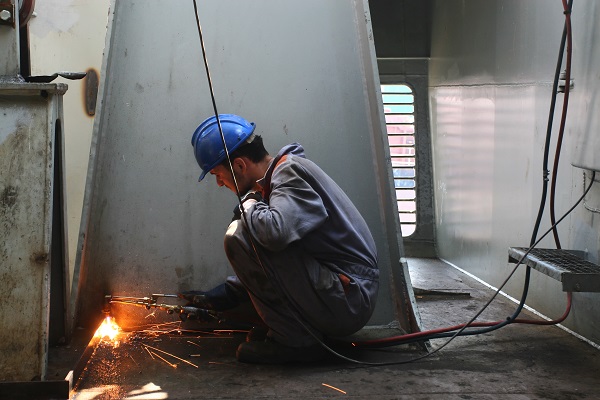
Additionally, some welding jobs structure their contracts to allow you a lot of time off, such as roles where you work on the road for six months and then have six months off.
Earn a Competitive Salary
Welder salaries vary depending on skill, experience and location. Highly skilled welders that are prepared to travel can earn well over six figures. Welders working with the military in the Middle East can also expect to receive high pay because of the risk involved.
Are you interested in taking the next step in your career with welding training?
Contact North American Trade School to find out more!
Key words: welding training, welding technician training, become a welder
Finishing Welding Classes? Here’s How You Can Land Your Dream Apprenticeship
December 24, 2019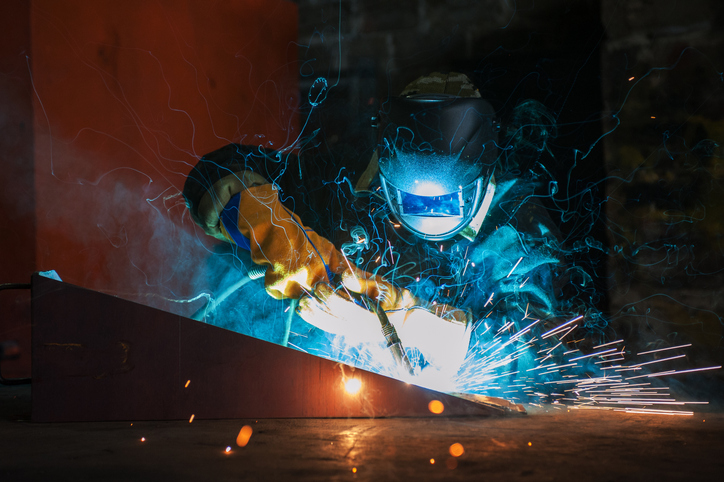
Welding can be a challenging job, but also a rewarding one. Getting an apprenticeship is what helps students on their way from the classroom to a welding career, and gives them the knowledge necessary to move up to journeyman status. Students who love working in hands-on environments can thrive in this type of career, and there are several ways in which they can get the kind of training they want.
Although getting welding training at an educational institution is an essential step in the process, what you do after your schooling is even more important than what you do during it, and getting the best possible apprenticeship can help build a foundation for anyone wanting to work in a skilled trade such as welding. Here are some tips for you to land your dream welding apprenticeship.
Get the Right Welding Training, Both in and Out of the Classroom
Finding the right apprenticeship opportunity can begin with the right training program. In Canada, apprenticeship programs vary between provinces, but they often require classroom time during a span of six to eight weeks per year, as well as paid, on-site training between two and five years. For welding specifically, the combination of classroom time and on-the-job training amounts to about 6,000 hours, or around three years.
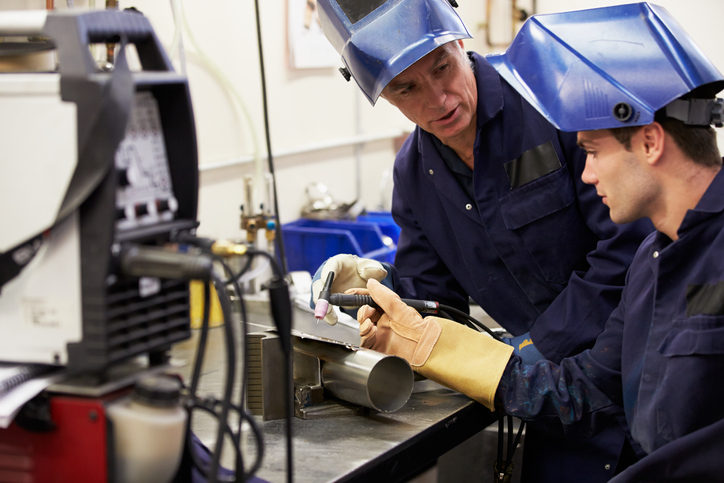
Whilst in school, students can learn various aspects of the trade through their welding courses. For example, the Structure & Pressure Vessel Welder diploma program at North American Trade Schools can teach welding students about concepts such as positional welding, blueprint reading, electrodes, consumables, and various welding processes.
How On-Site Training Can Give Students the Tools They Need for Success
Anyone hoping to have a career in welding in Ontario must become a member of the Ontario College of Trades, and must remain part of the College throughout their apprenticeship. As an apprentice on the job, students will be given instruction from a skilled worker, and the apprentice’s sponsor is tasked with signing the parts of the training standard demonstrating that the apprentice has met all necessary training requirements.
Apprenticeships can also pave the way for students to get good-paying jobs after their training. Apprentices get paid in the meantime so they can earn and learn at the same time. 90 per cent of the training for an apprenticeship takes place on the job, and the student will need to find a sponsor who can help provide them with the necessary training.
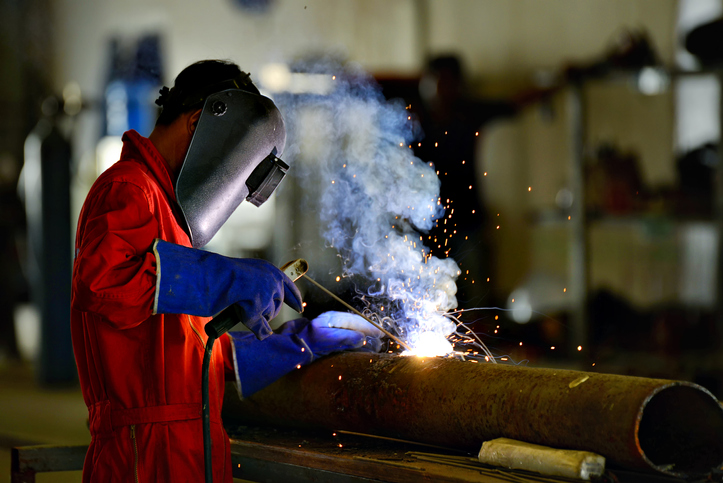
What a Student Needs to Do to Get the Most Out of Their Apprenticeship
Students should research various welding training programs, and call the schools to get more information on what each offers. Similarly, they can reach out to businesses offering apprenticeships or other welders to get tips and insights on how to get the apprenticeship they want after their welding courses. Since many training facilities are in close contact with companies hiring welders, they can work together to offer the best possible apprenticeship programs to students.
Furthermore, the length of an apprenticeship can be determined by how much prior work experience and classroom education the apprentice has under their belt. NATS’ welding diploma program also teaches students about searching for jobs, crafting resumes, and what they can expect during an interview for a job in welding to help them land an apprenticeship.
Want to attend welding classes?
Contact North American Trade Schools for more information!
A Look at Consumable vs. Non-Consumable Electrodes If You Want to Become a Welder
November 07, 2019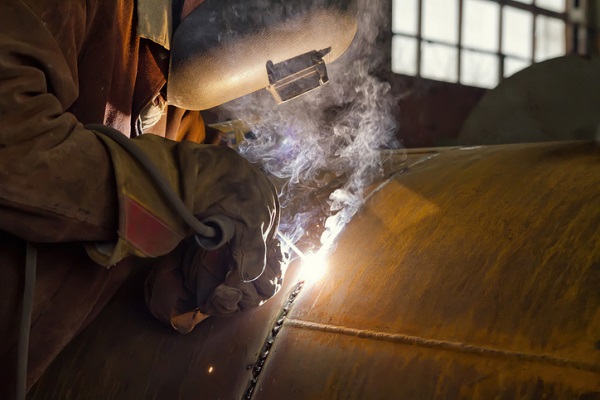
Different types of electrodes, also known as rods, are categorized based on their material, diameter, coating and whether they are consumable or non-consumable. The most common type of rods are steel, which may be mild, low alloy, or stainless, but there are also bronze, aluminum, and composite welding rods. It is part of the welder’s job to decide on which type of rods to use for different projects. The material of the core wire of a rod will depend on the type of metal being welded, also referred to as the parent material.
In order to choose the right material and type of rod, a welder must know the differences between consumable and non-consumable electrodes. Each is used for different applications and, with theoretical knowledge and hands on experience, a trained welder will know how to make these decisions to ensure quality welds.
First: a Few Basics of Welding Training
Before getting into the specifics of consumable and non-consumable electrodes it is important to set up some foundational points for your welding training. An understanding of what flux covering (or coating) is along with what a weld pool is, will give you a greater understanding of the main differences between consumable and non-consumable electrodes.

Flux coating is a layer of chemicals that covers the rod and burns off during welding. This produces an inert gas that protects the weld pool and solid metal from atmospheric contamination. Oxygen will weaken the bond of your joint and impurities in the weld pool can also cause problems. Typically, though not always, consumable rods have flux coating. Non-consumable electrodes usually do not, meaning they require the use of shielding gases.
The weld pool is the small coin-shaped part of a weld where the base metal is at its melting point. This is where a welder will either use filler material, in the case of non-consumable electrodes, or not use filler in the parent materials requiring consumable electrodes.
Consumable Electrodes
The key characteristics of consumable electrodes are the following: they have lower melting points, they are usually used in metal inert gas (MIG) welding, they are typically made of mild steel or nickel steel and they are used in arc welding. The lower melting point means that they melt away, or are consumed as the welder works. This also means that they have to be replaced on a regular basis.
There are four types of consumable electrodes if you are considering flux coating and they range from bare (no flux coating) to heavily coated. While there are even more variations in terms of the types of coating that may be used, overall, it is worth noting that consumable electrodes have fewer industry applications.
Non-Consumable Electrodes
As indicated by the name, non-consumable electrodes do not melt away in the process of welding. As a student in welding school you should know that non-consumables are made from materials with higher melting points. These materials include tungsten, carbon and graphite and although these materials will not be consumed during the weld, the rods may lose length due to vaporization and oxidation.
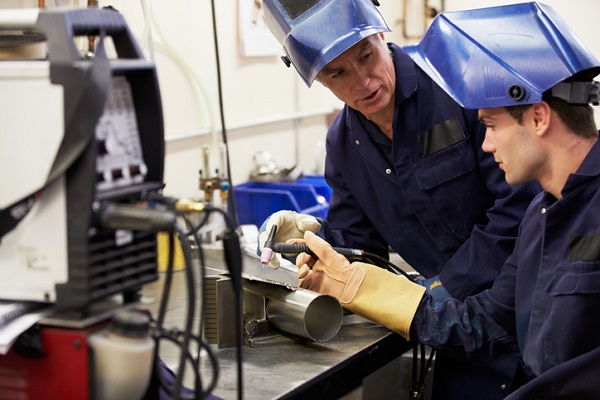
When using non-consumable electrodes a filler metal is necessary to make the weld pool. Shielding gases that would normally come from flux coating are also required to protect the welding area. Another factor to consider is that tungsten electrodes are more expensive than carbon or graphite electrodes. However, the choices you make will likely depend mainly on the parent materials.
Want to learn how to become a welder?
Contact North American Trades Schools to get started!
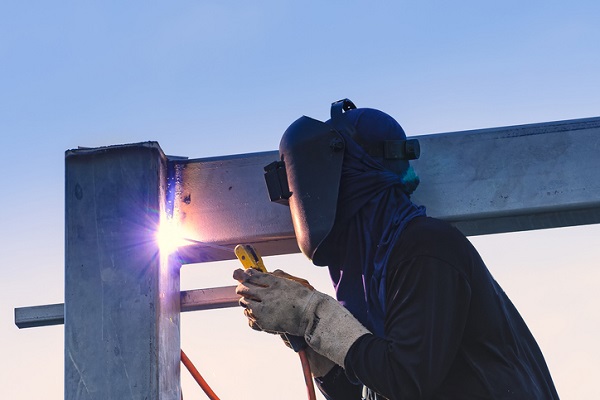 Welding is a great job to have if you want to travel. Although you might not think it at first, a welding career can open up several different opportunities for travelling, in a number of different work environments. Working as a travelling welder—or “road warrior,” as they’re called—can be extremely exciting, and it also gives you the opportunity to demonstrate your knowledge of the craft in various locales.
Welding is a great job to have if you want to travel. Although you might not think it at first, a welding career can open up several different opportunities for travelling, in a number of different work environments. Working as a travelling welder—or “road warrior,” as they’re called—can be extremely exciting, and it also gives you the opportunity to demonstrate your knowledge of the craft in various locales.
With many situations in which those in the field can perform their duties while seeing various parts of the country, welding is a field with plenty to look forward to after your training. Here are three opportunities in the welding industry that can involve travelling.
You Can Pursue Work as an Underwater Welder
If you have a love for both welding and swimming and have a strong willingness to travel, this could be the ideal way for you to marry the two. By working as an underwater welder, you’ll be working in aquatic locales in rivers, lakes, and oceans to help repair or construct infrastructure, such as dams, oil rigs, pipelines, ships, bridges, and more.
Underwater welding is only for the most experienced of welders, and to get this job you’ll also need your diving certification, which you can pursue after your welding diploma. Since underwater welders are a relatively rare breed, this is definitely a career choice that could result in you travelling or relocating entirely.
You Could Also Become a Structural Welder for Industrial Buildings
As an industrial structural welder, you can travel between factories during shutdowns to repair or maintain industrial buildings and energy plants. In this kind of role, you can expect to spend a significant amount of time on the road, going to the facilities where your skills are required. Industrial shutdown work is often fairly easy to come by, even if major plants tend to have a limited period of being shut down (i.e., about a week or so). However, being able to travel frequently and for certain stretches of time could be a definite boost to your welder career—not to mention you’ll be helping manufacturers keep their plants running smoothly.
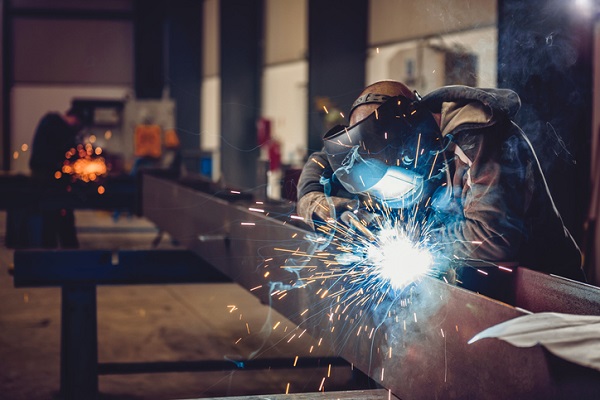
You Could Also Work at Shipyards or on Ships in Your Welder Career
Becoming a welder in the shipping industry can also be an exciting opportunity if you’re intrigued by the idea of taking your skills out to sea. Not only is there plenty of variety to be found in the industry as a welder, but the breadth of locales you could find yourself working in can also make this kind of job a particularly rewarding one. You can help to construct various types of ships—in which case you would work in a shipyard—or you could do maintenance tasks onboard a ship, which can involve living on the ship while it is at sea. In either case, the locations where you could find yourself working can be wide ranging. Likewise, onboard maintenance welding jobs can result in you working in different countries often, such as if you’re working on a cruise ship or container ship.
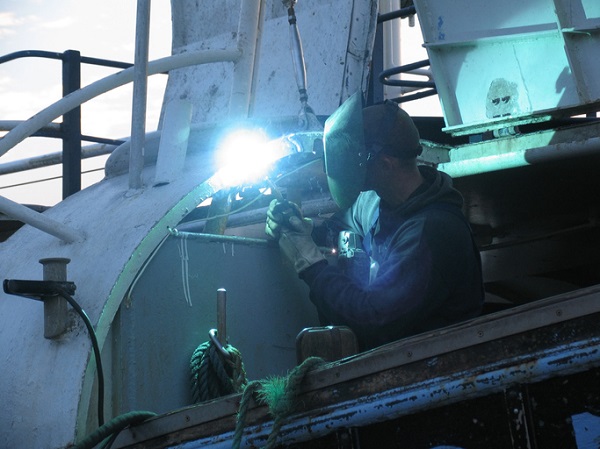
Want to start your welding technician training?
Contact North American Trade Schools to learn more!



